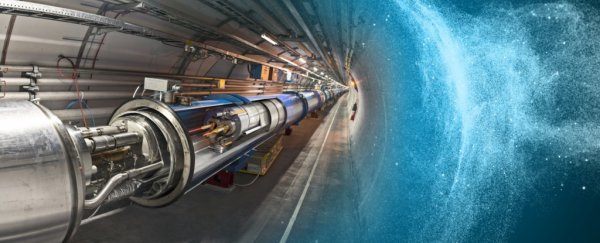The Large Hadron Collider is at it again, showing us new wonders in the world of particle physics. Scientists working on the Large Hadron Collider beauty (LHCb) collaboration have observed two new particles that have never been seen before - and seen evidence of a third.
The two new particles, predicted by the standard quark model, are baryons - the same family of particles as the protons used in LHC particle acceleration experiments.
Baryons are what most of the Universe is made up of, including protons and neutrons - composite particles consisting of three fundamental particles called quarks, which have different 'flavours', or types: up, down, top, bottom, charm, and strange.
Protons consist of two up quarks and one down quark, while neutrons consist of one up quark and two down quarks, for instance. But the two new particles discovered have a slightly different composition.
Named Σb(6097)+ and Σb(6097)-, they consist of two up quarks and one bottom quark; and two down quarks and one bottom quark, respectively.
These particles are known as bottom baryons, and they are related to four particles previously observed at Fermilab. However, the new observations mark the first time scientists have detected these higher-mass counterparts; they are about six times more massive than a proton.
So what's the third particle candidate we mentioned earlier?
The researchers think it might be a strange type of composite particle called a tetraquark. These are an exotic kind of meson, which normally have two quarks. But a tetraquark is composed of four quarks - well, two quarks and two antiquarks, to be more accurate.
Observational evidence of tetraquarks has been pretty elusive to date, and that is also the case here. Evidence of the candidate particle, called Zc-(4100) and including two heavy charm quarks, was detected in the decay of heavier B mesons.
But the detection only had a significance of over 3 standard deviations. The usual threshold to claim the discovery of a new particle is 5 standard deviations. It will take future observations to either confirm or disprove the existence of Zc-(4100).
The new bottom baryons, you'll be pleased to know, blew that threshold out of the water: Σb(6097)+ and Σb(6097)- had significances of 12.7 and 12.6 standard deviations respectively.
If you want to read more about the discovery, you can do so on the LHCb website.
There are also two papers on pre-print resource arXiv - you can read about the bottom baryons here and the tetraquark candidate here.
